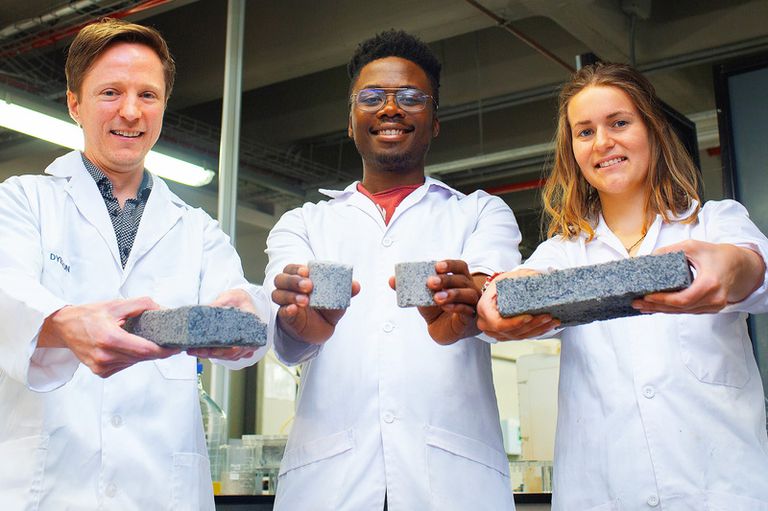This innovative and surprising material has been discovered and presented to the world by Suzanne Lambert, a master’s degree student in civil engineering at the University of Cape Town, in South Africa
Lambert and his research team have managed to make these bio-bricks from human urine, by a natural process known as microbial carbonate precipitation (a process similar to the way is shells are formed).
The urease (an enzyme) is responsible for breaking down the urea in the urine, while calcium carbonate produced following a complex chemical reaction.
This is what you get, hardening the sand giving it any shape, so the material could serve both to create a circular column and to make a rectangular brick.
The creation of these new bio-bricks follows a similar process to the way shells are formed.
It should be noted that the idea of using urea to make bricks is not new. It was tested in the United States a few years ago using synthetic solutions.
But it is the first time that real human urine is used, which is a great step forward in recycling waste, as its creators claim.
On the other hand, while a traditional brick is baked in a furnace at a temperature between 900 and 1000 ° C (producing large amounts of carbon dioxide), these new bio-bricks are made in molds at room temperature. Another environmental benefit .
But what about its strengh? Are they as strong as the traditional ones? According to its creators, the new bricks can adapt without problems to the needs of each client.
How? It’s a matter of time: the longer we give the bacteria to do their job and cement, the stronger the material will be.














